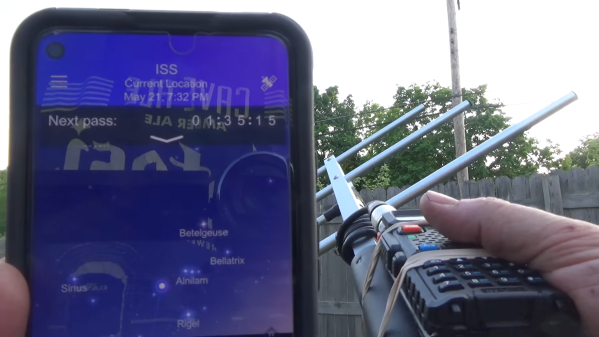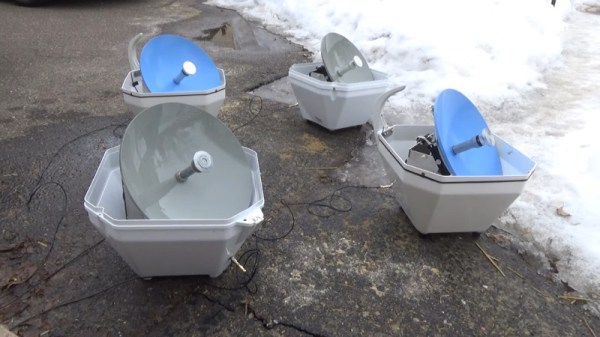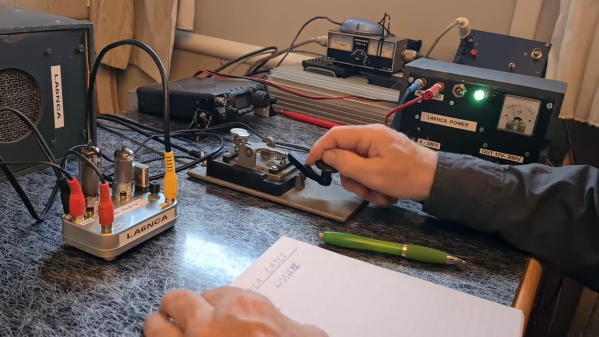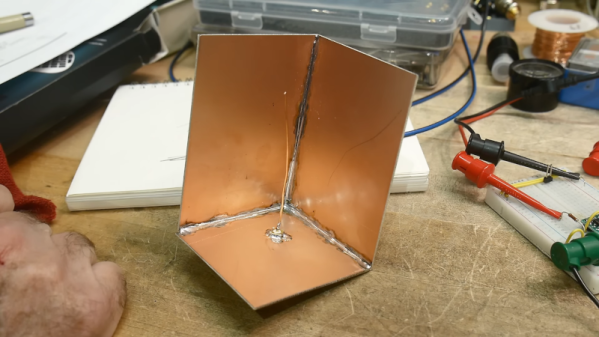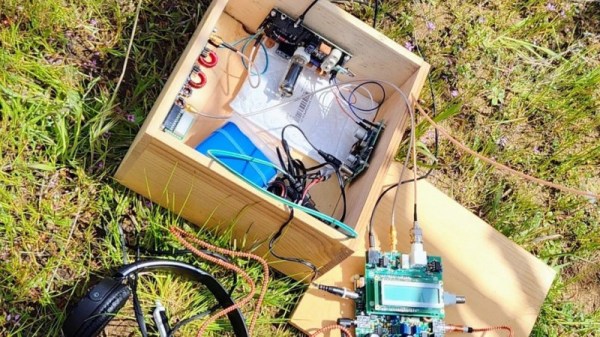Like any hobby, amateur radio has no upper bounds on what you can spend getting geared up. Shacks worth tens of thousands of dollars are easy to come by, and we’ll venture a guess that there are hams out there pushing six figures with their investment in equipment. But hands down, the most expensive amateur radio station ever has to be the one aboard the International Space Station.
So what do you need to talk to a $100 billion space station? As it turns out, about $60 worth of stuff will do, as [saveitforparts] shows us in the video below. The cross-band repeater on the ISS transmits in the 70-cm ham band, meaning all that’s needed to listen in on the proceedings is a simple “handy talkie” transceiver like the $25-ish Baofeng shown. Tuning it to the 437.800-MHz downlink frequency with even a simple whip antenna should get you some reception when the ISS passes over.
In our experience, the stock Baofeng antenna isn’t up to the job, so something better like the Nagoya shown in the video is needed. Better still is a three-element Yagi tuned down slightly with the help of a NanoVNA; coupled with data on when the ISS will be within line-of-sight, picking up the near-constant stream of retransmissions from the station as Earth-based hams work it should be a snap — even though [saveitforparts] only listened to the downlink frequency here, for just a bit more of an investment it’s also possible for licensed hams to uplink to the ISS on 145.900 MHz.
For those who want a slightly higher level of difficulty, [saveitforparts] also has some tips on automating tracking with an old motorized mount for CCTV cameras. Pitchfork notwithstanding, it’s not the best antenna tracker, but it has promise, and we’re eager to see how it pans out — sorry. But in general, the barrier to entry for getting into space communications is so low that you could easily make this a weekend project. We’ve been discussing this and other projects on the new #ham-shack channel over on the Hackaday Discord. You should pop over there and check it out — we’d be happy to see you there.

